

Full-day country walks in
SE England and beyond
Whittlesford to Wandlebury
Click on the image below to access
the full map on plotaroute
Distance: 9.3 miles (but see below).
Time without long breaks: Apx 4-5 hours.
Terrain: Easy going (mostly flat).
How to get there and back: Buy a return ticket to Cambridge and catch a slow train that stops at Whittlesford Parkway. Return from Cambridge.
Pub breaks: There are no pubs directly on this route, although slightly off it is the Tickell Arms gastropub at Whittlesford. Sawston has three pubs, but it's a diversion to get to them and none of them particularly appealed to us. If you end up in Cambridge, this more than makes up for it.
More information: The distance and time details above are approximate as they are dependent on how much time you want to spend exploring Wandlebury Fort. The distance to the edge of the park is about 7 miles.

This walk through the wooded Cambridgeshire countryside is perfect for autumn and will appeal to lovers of antiquities. It includes a rare sheela-na-gig church carving, two iron age burial barrows and a short section of Roman road. It ends at Wandlebury Country Park, the location of a large hill fort associated with various local myths and legends. The fort, now home to a herd of highland cattle, is also the site of the controversial Gog Magog chalk hill figures, although they are now covered up (see panel below). Wandlebury is on the outskirts of Cambridge and the walk can be combined with a night out in the city.
Leave the station via the exit on Platform 2, walk down Station Road West, and then turn right into Duxford Road (not far from here, incidentally, is Duxford Imperial War Museum). Walk up the road for about 3/4 mile until you reach Whittlesford village. Just past the green on your right, you will see the half-timbered Guildhall ahead of you (there is a small post office shop on the High Street opposite if you need to stock up on supplies). Turn off right before the Guildhall, by the war memorial, and head down Church Lane. This soon follows a brick wall. In 300m, turn left for the approach to the Norman parish church.
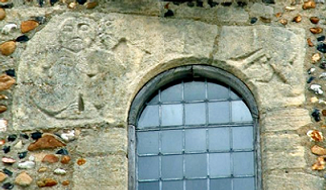
As well as the Sheela, look out for the gargoyle on the other side of the church tower. Leave the churchyard on the other side to where you came in and turn right at the sign along a path bordered by wooden fences. This is the Whittlesford to Sawston Cycleway. After half a mile, cross over the River Cam. The path bears right and then left before it reaches a level crossing. Cross over the tracks and the road and then turn left into Mill Lane. Take the left fork into New Road on the edge of the small town of Sawston. At the traffic lights, cross over and continue along Babraham Road. At the end of the houses, take the footpath on the left that skirts a field.
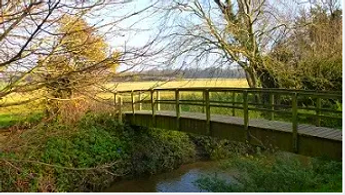
Just past the burial mound, the path ends at a T-junction with a track. This is part of a long roman road (alternatively called Worsted Street and Via Davana) that once stretched from Colchester in Essex to Chester. Turn left. After about half a mile, you will come to the entrance to Wandlebury Country Park. There is a track to the left but take the footpath to the right of this which leads through an avenue of beech trees. When we did this walk, we were pursued here by an unaccompanied black dog – a familiar motif in British folklore, often associated with ancient sites. Turn right, and then take another right along the northern edge of the park.
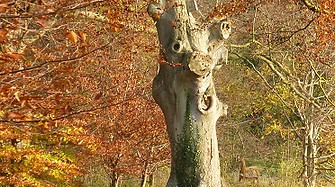
Wandlebury fort was established around 400 BC. Gervase of Tilbury's Otia Imperiala of 1214 mentions a legend whereby any man entering the fort at midnight and uttering 'Knight to knight, come forth' would be challenged to a joust by a phantom warrior. Wandelbury is also thought to be the Wandesborow Castle mentioned in Le Morte d'Arthur. The wider area is known as the Gog Magog hills. According to Geoffrey of Monmouth, Gogmagog was a giant – and there are legends associating a giant with the area. Another intriguing story concerns some mysterious chalk figures, which were allegedly discovered here (see below). To leave the park, head to the south west corner, and cross over the road to reach the stop for buses into Cambridge.
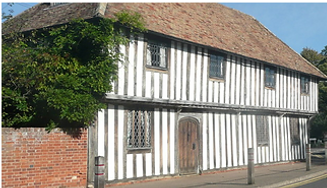
Just under the clock on the church tower is a sheela na gig carving. These exhibitionist figures are found on churches of this era in Britain and Ireland and some other parts of Europe. They are often older than the churches themselves (as seems to be the case here). This one is unusual – but not unique – as the female figure is accompanied by a phallic male. Explanations for their purpose range from fertility symbols to warnings against the sin of lust, but the most common theory is that they are apotropaic – to ward off evil. This might explain why they are often located above window arches or doorways. You can read more about the Whittlesford carving at the Sheela Na Gig Project.
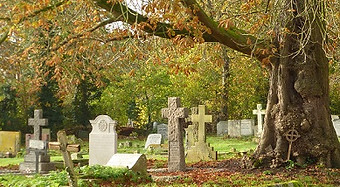
Keep on the path, which soon reaches open countryside. Turn left when it meets a track, and then take a right through a metal side gate. Follow the path across the field and through some woods and across a bridge over the River Granta. Continue along the edge of fields to emerge at the A3107. Cross over to the pavement on the other side, turn right, walk past a couple of houses, and then turn left into a narrow lane. This is Mile Road, which follows the route of a prehistoric track. After 3/4 mile you will come to the Copley Hill tumulus on your left, a Bronze Age round barrow which is hidden within a small copse of trees.
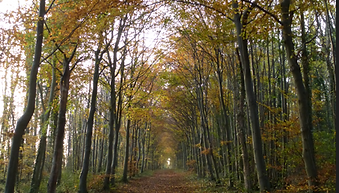
You will come to a viewing spot with a bench, a good place to take a breather. This is Ely View, which looks over a golf course. On a clear day, you can just about see Ely Cathedral in the distance. Head down the track through the trees towards the hill fort. There is a lot to explore in the park (there's a useful map here), so it's up to you what route you want to take. The buildings in the middle of the fort are 18th century royal stables, built when the site was home to the King's horses. As well as the circular ditches of the fort, there is a tumulus in the far south-eastern corner of the park, hidden away in the trees at Wormwood Hill.
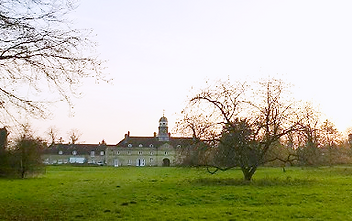
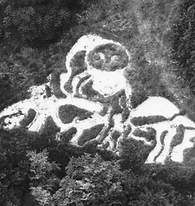
Wandlebury is the site of three disputed iron age chalk figures, discovered by the writer and archaeologist TC Lethbridge in the 1950s. Lethbridge was an unorthodox figure and regarded as an outsider by the conventional archaeological community, which accused him of lacking academic rigour. Born into a wealthy family, he attended Trinity College, Cambridge, studying geology – a subject he found insufferably dull compared to his real calling. He took part in two arctic expeditions and joined the Cambridge University Museum of Archaeology and Ethnology as the Keeper of Anglo-Saxon Antiquities. His independent means made him ideal for the voluntary role and he wrote several books based on his archaeological research. In 1954, Lethbridge began investigating rumours of chalk hill figures in the Gogmagog Hills south of Cambridge and excavated a site just outside the perimeter of Wandlebury fort. He uncovered three figures: a warrior, a hooded goddess, and a sun god.
Lethbridge reported his findings in The Times and wrote them up in his book Gogmagog: The Buried Gods. However, the Council of British Archaeology criticised his methodology and the figures were rejected as being the result of Lethbridge's imagination. As a result of the controversy, Lethbridge became disillusioned with the archaeological establishment and spent the final 15 years of his life exploring his interest in parapsychology, leading to a succession of remarkable books covering topics such as ghosts, divining, extra-terrestrials and earth mysteries. The authenticity of the Gogmagog figures remains disputed. Although no sign of them remains today (we have marked their location on the map), there is a campaign to uncover them linked to a band called TC Lethbridge. In 2003, another group of admirers of his work, The Sons of TC Lethbridge, released a book and CD set called A Giant: The Definitive T.C. Lethbridge. Collaborators included Julian Cope and Colin Wilson. KB
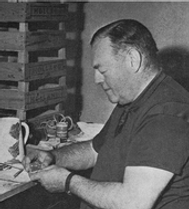
Walks by County
Listed by the most traversed
county for each route
Berkshire
Buckinghamshire
Henley circular
Pr. Risborough-Wendover
Tring circular
Tring-Leighton Buzzard
Cambridgeshire
Cambridge-Trumpington
Whittlesford-Wandlebury
Derbyshire
Edale-Hope
Dorset
Corfe Castle-W. Matravers
East Sussex
Ashdown Forest
Berwick circular
Berwick-Seaford
Cuckmere Haven-E'bourne
Forest Row-Eridge
Glynde-Berwick
Glynde-Seven Sisters
Isfield-Lewes
Lewes circular 1
Lewes circular 2
Lewes-Hassocks
Lewes-Rottingdean
Plumpton-Hassocks
Rye-Three Oaks
Gloucestershire
Kingham circular
Toddington-Cleeve Hill
Hertfordshire
Codicote-St Albans
Odsey-Royston
Kent
Oxfordshire
Surrey
West Sussex
Bramber-Amberley
Steyning circular
West Yorkshire
Haworth-Hebden Bridge
Wiltshire
Avebury circular
